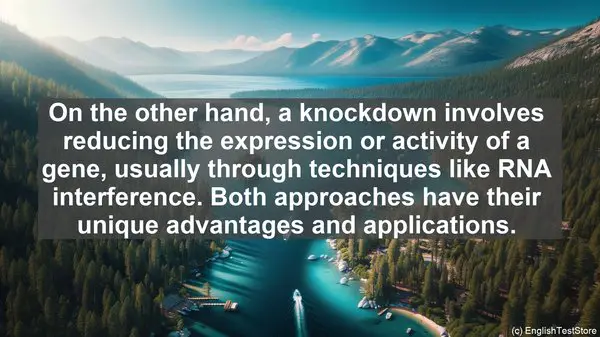Introduction: The Language of Functional Genomics
Welcome to our lesson on the top 10 commonly confused words in functional genomics. As with any scientific field, functional genomics has its fair share of technical terms and jargon. However, mastering these words is essential for effective communication and comprehension. So, let’s dive in!

1. Gene Expression vs. Gene Regulation
Gene expression refers to the process by which information from a gene is used to create a functional product, such as a protein. On the other hand, gene regulation involves the various mechanisms that control when and to what extent a gene is expressed. While gene expression is the ‘what,’ gene regulation is the ‘how much’ and ‘when.’ Understanding this distinction is crucial for studying the dynamic nature of gene activity.
2. Transcriptome vs. Proteome
The transcriptome refers to the complete set of RNA molecules transcribed from the genome of an organism. It represents the active genes and their expression levels. In contrast, the proteome is the entire set of proteins produced by a cell, tissue, or organism. While the transcriptome provides insights into potential gene activity, the proteome gives a more direct view of the functional molecules at work.
3. Homologous vs. Orthologous Genes
Homologous genes are those that share a common ancestry, meaning they have evolved from the same gene in a common ancestor. Orthologous genes, on the other hand, are homologous genes found in different species that perform similar functions. Distinguishing between these terms is crucial when studying evolutionary relationships and functional conservation across species.
4. Variant vs. Mutation
A variant refers to any difference in the DNA sequence compared to a reference or standard sequence. Variants can be present in the general population and may or may not have any functional consequences. On the other hand, a mutation specifically refers to a variant that alters the function or structure of a gene or protein. While all mutations are variants, not all variants are mutations.
5. Genotype vs. Phenotype
The genotype refers to the genetic makeup of an organism, including all the genes and variants it carries. The phenotype, on the other hand, is the observable characteristics or traits of an organism, which can be influenced by both genetic and environmental factors. Understanding the genotype-phenotype relationship is crucial for deciphering the molecular basis of traits and diseases.
6. Knockout vs. Knockdown
In functional genomics, a knockout refers to the complete removal or inactivation of a gene, often achieved through genetic engineering techniques. This allows researchers to study the effects of the gene’s absence. On the other hand, a knockdown involves reducing the expression or activity of a gene, usually through techniques like RNA interference. Both approaches have their unique advantages and applications.

7. Enrichment Analysis vs. Pathway Analysis
Enrichment analysis involves identifying whether a set of genes or proteins has a higher representation of certain functional categories compared to what would be expected by chance. It helps in understanding the biological processes or pathways that may be associated with the genes of interest. Pathway analysis, on the other hand, focuses on visualizing and understanding the interactions and relationships between genes in a specific pathway or network.
8. Single-Cell vs. Bulk RNA Sequencing
Bulk RNA sequencing involves sequencing the RNA from a population of cells, providing an average view of gene expression. In contrast, single-cell RNA sequencing allows the analysis of gene expression at the individual cell level, providing insights into cellular heterogeneity and dynamics. Choosing the right approach depends on the research question and the level of resolution required.
9. Annotation vs. Functional Analysis
Annotation involves assigning biological information to a gene or protein, such as its function, location, or interactions. It’s like adding labels to the parts of a machinery. Functional analysis, on the other hand, goes a step further and aims to understand the biological significance and implications of the annotated features. Both steps are crucial for making sense of the vast amount of genomic data.
10. GWAS vs. QTL Mapping
GWAS, or Genome-Wide Association Study, involves scanning the entire genome of individuals to identify genetic variants associated with a particular trait or disease. It’s like searching for ‘hotspots’ in the genome. QTL mapping, on the other hand, focuses on identifying regions of the genome, known as Quantitative Trait Loci, that are associated with variations in a quantitative trait. Both approaches have been instrumental in unraveling the genetic basis of complex traits.
